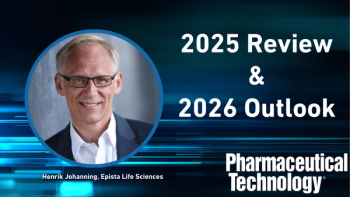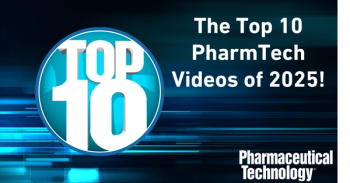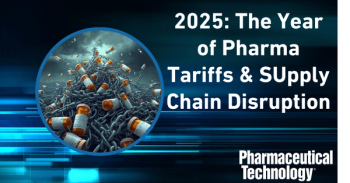
- Pharmaceutical Technology-11-02-2011
- Volume 35
- Issue 11
Turning around Pharmaceutical Manufacturing in the US
The authors propose a plan to keep the US pharma industry afloat and in the lead.
Pharmaceutical manufacturing in the United States is in rapid decline. To devise a strategy for reversing it, we need to understand the current landscape and develop a coherent plan for re-energizing technological innovation, while making domestic manufacturing economically viable.
The industry is undergoing wrenching changes. Higher regulatory standards for efficacy and safety, among other reasons, have led to a significant level of difficulty in replacing "blockbusters" developed in the 1980s and 1990s that are now coming off patent. The rapid growth in biological understanding remains a source for current and future drugs, but has also raised the bar on selectivity and toxicology expectations. In the past 10 years, new molecular entities (NMEs) entering the market number less than half of those in the preceding decade. This decrease has caused significant reductions in revenue for the industry, forcing reductions in workforce, a focus on productivity and cost-containment, and a search for new business models.
Industry is also grappling with issues of quality and compliance in manufacturing. Some key contributing factors are the regulated environment, which has pushed to lock inefficient and poorly understood manufacturing processes too early, the lack of modern process controls, and, ironically, the historic high gross margins of the industry, which until recently often made manufacturing cost a minor component undeserving of serious attention.
New business models
This article focuses on two new key business models being adopted by the industry. First, the emerging distributed model for innovation, where large companies rely for much of the science and execution of research on a network of companies of diverse sizes, sometimes supported by academic laboratories, each one excelling in a given niche (e.g., discovery, clinical testing, product development, regulatory approval). This transition away from the traditional vertically integrated development model has brought a new set of challenges with it, including a reluctance of both large pharmaceutical companies and venture capital firms to fund new drugs and drug-delivery systems that have not yet achieved proof-of-concept (the so called "valley of death"), and the transactional cost associated with operating in this "pharmaceutical ecosystem."
A second strategy is the increased outsourcing of primary and secondary manufacturing, packaging, and distribution. CMOs have become a major part of this pharmaceutical ecosystem. The trend to outsource has brought a diverse group of CMOs into the picture, ranging from large, well-capitalized companies with a solid understanding of manufacturing, quality, and compliance, to small, inexperienced companies in emerging markets who struggle to understand, much less provide, high quality and compliance standards.
Furthermore, pharmaceutical sales in emerging markets are expected to grow from 10–40% in the next 20 years, providing most of the worldwide growth, thus driving pharmaceutical companies to invest and create a presence in those markets. Thus, shifting manufacturing to emerging markets is an effective way to achieve this goal, but the net result for the US economy is a massive loss of jobs.
There are also fundamental reasons why pharmaceutical manufacturing has lagged behind other high-tech industries. Every product is a different molecule, with different characteristics, method of manufacture, analytical methodology, stability characteristics, and so forth. Most pharmaceutical products involve powder processing, which is—at best—a partially understood field. As a result, for every product, the entire product-development process is developed from scratch.
In contrast, other large-scale manufacturing industries such as petrochemicals, automobile, and microelectronics, deal with a much smaller number of materials and use processes that are better understood. The products and manufacturing methods evolve and improve with time because one can build on what was done before.
New divisions of players
Industry therefore faces a pressing conundrum: how to manage the quality and compliance of pharmaceutical manufacturing, which has lagged behind other industries even in the best of times, during a period of cost-cutting and fragmentation, with a myriad of manufacturers of various degrees of sophistication in a variety of countries and cultures. At the same time, our country seeks to increase manufacturing as a percentage of the US economy as a means of remaining competitive as a nation. We propose here that these two imperatives are related and can be managed in an integrated fashion.
It is useful to separate pharmaceutical manufacturing, both primary and secondary, into two groups: those operations that have become conventional and essentially commoditized, which are now being executed around the globe, and which are unlikely to return to the US; and those operations which relate to novel, "smart" products and processes that are knowledge-intensive, have IP protections, and are less sensitive to labor costs.
In the case of the first group, commoditized manufacturing, quality and regulatory compliance remain crucial. Indeed, quality compliance has become more challenging in the outsourced-manufacturing environment because it now must be managed across many more intercompany barriers. Fortunately, a solution has been demonstrated in the chemical industry. The answer is to make manufacturing technology mature, transparent, and portable. The operations involved must be categorized and described in detail, making it possible to harmonize methods, approaches, operations, control algorithms, and quality tests, such that the operations can be understood fundamentally, modeled mathematically, and then executed under predictive-model controls as is done by other high-tech industries. This approach addresses quality concerns while also raising the technological and scientific expectation for producers, making it more likely that manufacturing can once again be performed in the US.
The later group of "smart" products and processes involve targeted drugs and delivery systems, personalized medicine, medicines prepared locally on demand, complex hybrid biologics, sensors, and new diagnostics. These technologies are enormously promising, but they require long-term fundamental research to create new products, new manufacturing methods, and new technologies to achieve goals like rapid, high-precision microdosing, self-assembled targeted delivery nanoparticles, and so forth. The players in this area are a diverse set of companies and universities from around the world that typically work in a disconnected fashion, perhaps entering into complex, bilateral (and sometimes asymmetrical) agreements.
In such an environment, it is hard to assess which approaches and products have the most merit, and how they could function together in different and synergistic combinations. The best options may take a long time to come to market or may not be created at all. These are the products that we must ensure get developed and manufactured in the US.
A plan forward
Given this environment, re-energizing pharmaceutical manufacturing in the US is likely to take place only if a coherent plan is implemented. In the authors' opinion, such a plan must address four crucial elements: strong long-term technology development, a nurturing ecosystem where collaborations among innovation players are facilitated while transactional costs between them are minimized, science-based compliance with high quality standards, and a concerted effort to create and maintain a highly skilled labor pool capable of supplying the needs of industry, government, and academia. Thus, we propose a strategy involving the following components:
1. Create a long-term, strategically driven research center, bringing industry, academia, and government together. The center would be devoted to developing the advanced technologies that will give birth to the next generation of products (patient-specific therapies, point-of-need manufacturing, drug-sensor combination products, in-situ diagnostics). Such a center could play a similar role as the Sematech consortium (
2. Develop a well-funded, agile innovation ecosystem where technology customers (i.e., finished goods commercialization companies) and technology suppliers (e.g., NME suppliers, equipment and instrumentation companies, CROs, CMOs, commercial integrators, and universities) can work together effectively, with access to funding, and with minimal transactional overhead. By treating process development and manufacturing technology as precompetitive activities, members who never interact or interact only pairwise in transactional arrangements, would then interact as a group and through partnerships rather than through transactions. A set of standards, approaches, and controls for the commoditized processes and products can be created in this environment, with ongoing consultation with regulatory agencies so that the standards can become part of regulatory expectations.
3. Establish a regulatory science center that can provide scientific support to the FDA and to ensure that regulations are updated, transparent, and promote higher quality standards while decreasing regulatory risk. This center would create a system to communicate and share development and manufacturing issues with the industry so that they are not repeated numerous times, and will create a repository of the most basic and necessary science that must be applied, as a minimum, to all process and product development
4. Enable training and educational programs that ensure a supply of properly skilled labor for all of the noted parties. To rejuvenate pharmaceutical product and process development and manufacturing in the US, an entire generation of pharmaceutical scientists
(and their management) must be educated, or in some cases, re-educated on modern product and process engineering methodologies.
This approach is entirely feasible. One of the few silver linings of the recent massive restructuring in US-based branded pharma is that there is a ready supply of available scientists eagerly awaiting the opportunity to upgrade their technical skills. It is hard to conceive a better use of educational resources than to devote them to this purpose.
A plan such as the one proposed here will not happen spontaneously. It will take time and effort. It will take leadership and aggressive advocacy. However, if we consider the alternative, which is to let yet another great American industry leave our shores, the path forward appears self-evident.
To advance these goals, the authors plan to organize a Summit Meeting at Rutgers University in Spring 2012 to gather input from all sectors and to develop concrete plans. We call all leaders in the pharmaceutical industry, government, and academia to join us in an effort to bring these ideas to Washington.
Fernando Muzzio, PhD, is director of NSF Engineering Research Center at Rutgers University and a member of the PharmTech editorial advisory board. Mauricio Futran, PhD, is professor and chair of the Department of Chemical and Biochemical Engineering at Rutgers University,
Articles in this issue
about 14 years ago
Growth for Small Pharmaabout 14 years ago
Drug Shortages Create Crisis for Manufacturers, Regulatorsabout 14 years ago
Using Simulation to Improve Drug-Delivery Effectivenessabout 14 years ago
Easy on the Alcohol!about 14 years ago
Catalyzing the Synthesisabout 14 years ago
Super Fast Pharmaabout 14 years ago
Managing the Global Clinical-Trial Material Supply Chainabout 14 years ago
In the Spotlight November 2011about 14 years ago
Biosimilars' Technology NeedsNewsletter
Get the essential updates shaping the future of pharma manufacturing and compliance—subscribe today to Pharmaceutical Technology and never miss a breakthrough.




